In Japan, Sumo tournaments play a significant role in both the cultural and sporting landscape. These tournaments, known as basho, occur six times a year and highlight the incredible strength and skill of Sumo wrestlers. Each basho spans 15 days of intense matches, with wrestlers competing to be promoted to the upper rankings, and just some of them for the highest title Yokozuna. Join me as we delve into the world of Sumo and explore the thrilling tournaments that captivate audiences across Japan.
Article Contents
Tickets for Sumo tournaments are available through the official Japan Sumo Association website or online platforms like Ticket Oosumo. They typically go on sale about a month before the tournament. There are three basic types of tickets and the prices of all of them vary depending on how close the seats are to the ring and the day of the week:
Box Seats (Masu-seki): These are traditional tatami seating areas that accommodate four people. Located closer to the ring (dohyo), they are quite popular—and expensive—offering a more immersive experience.
Arena Seats (Isu-seki): These are Western-style individual seats situated farther from the ring. These are not that close to the ring compared with the Masu-seki but are definitely much more comfortable.
General Admission (Jiyu-seki): Available only on the day of the event, these tickets sell out very quickly. It’s best not to rely on securing a seat on the day of the tournament.
*Unfortunately, after the COVID these seats are not sold anymore in most of the basho.
Sumo tournaments are incredibly popular, especially on weekends and when top-ranked wrestlers, including Yokozuna, are competing. If you’re planning to attend on a weekend or for high-profile matches, securing tickets can be quite challenging. Even for us, with access to most of the raffles, it often takes multiple attempts and considerable time to get tickets for specific days.
Prices vary depending on the type of seat and proximity to the ring. With:
Box Seats (Masu-seki): 9,000 to 22,000 yen per person (sold in sets of 4).
Arena Seats (Isu-seki): 3,000 to 10,000 yen.
General Admission (Jiyuseki): Around 2,000 to 3,500 yen.
Tickets are also sold in secondary markets but they usually have very high prices. In some cases, a 3,000 yen ticket can cost more than 20,000 yen on the secondary market.
We highly recommend that all our tour guests book their seats in advance (we recommend 1 month prior). Ticket prices are included in the cost of our tours so you don’t need to worry about them, and we take great care to secure tickets for the requested days.
Sumo in Tokyo
The Tokyo sumo tournament, also known as the Tokyo Basho, is held three times a year in the famous Ryogoku Kokugikan arena. It takes place in January, May, and September. Each tournament lasts for 15 days, usually from the second or third Sunday of the month.
The Ryogoku Kokugikan is located in Sumida Ward, Tokyo, and is the home of sumo wrestling in Japan. The venue is easily accessible via public transportation, located near the Ryogoku Station on the JR Sobu Line.
Attending the Tokyo Basho offers an authentic and unforgettable sumo experience. The atmosphere inside the Ryogoku Kokugikan is electric, with fans of all ages filling the stands to cheer on their favorite wrestlers. Each day, the action builds toward the high-stakes matches featuring the top wrestlers, including the Yokozuna. The venue itself is steeped in tradition, from the ceremonial rituals that begin each day to the passionate cheers from spectators. Whether you’re a sumo enthusiast or a first-time visitor, the Tokyo Basho offers a thrilling glimpse into one of Japan’s most revered sports.
Around this sumo venue, there are multiple historical sites related to the sumo history and traditions worth visiting.
You can check some of our available and past Tokyo sumo tournament tours:
Sumo in Nagoya
The Nagoya Basho is typically held in July, running for 15 days from the second Sunday of the month until the third Sunday. Traditionally, it has taken place at the Aichi Prefectural Gymnasium, now known as Dolphins Arena, located next to the iconic Nagoya Castle. This venue offered a unique blend of modern sporting facilities and proximity to this historic landmark. However, starting in 2025, the Nagoya Basho will move to the brand-new IG Arena.
Compared to the sumo tournaments in Tokyo, the Nagoya Basho has a more regional and local feel. The crowd here tends to be passionate yet laid-back, and there’s often strong support from local businesses for the tournament. The hot, humid summer atmosphere adds a unique vibe to the event, making it a memorable experience for attendees.
During the tournament period, wrestlers train in temporary sumo stables (beya) set up nearby. Fans may occasionally catch glimpses of the wrestlers as they walk around Nagoya or move between the stables and the arena. The proximity of the stables adds to the immersive experience of the Nagoya Basho, offering rare opportunities for fans to see the wrestlers up close.
Nagoya is our home base, and we highly recommend joining one of our tours to experience this exciting event firsthand. For more information about our tours in Nagoya, visit our sister site, Nagoya is not boring. This is the booking page to secure your seats at the Nagoya sumo tournament in July.
Additionally, Aichi is famous for its Jungyo Sumo Exhibition Tours, which take place outside of the main tournaments. These exhibitions are organized by the Japan Sumo Association and are held across Japan, especially in smaller cities or regions that don’t host the major tournaments. Occasionally, these tours even extend internationally, giving fans around the world a chance to experience sumo wrestling.
You can check some of our available and past Jungyo Sumo exhibition tours:
Sumo in Osaka
The Osaka sumo tournament is held every March, usually from the second Sunday of the month, running for 15 days. The tournament takes place at the Osaka Prefectural Gymnasium, also called EDION Arena Osaka, located in Namba, a central area of the city. This venue has been hosting the tournament for many years.
The Haru Basho, as how is locally known, is one of the most important tournaments in the sumo calendar. Like other major tournaments, sumo wrestlers must perform well here to maintain or improve their rankings.
Wrestlers compete for the championship, known as the Yusho, and the results of the Osaka tournament can influence a wrestler’s promotion or demotion within the ranking system, known as the banzuke.
The atmosphere at the Osaka tournament is known to be lively and enthusiastic. Osaka has a reputation for having passionate, vocal fans, which gives the event a vibrant, energetic feel.
Unlike the Tokyo tournaments, Osaka’s event tends to have a more relaxed and local vibe, making it a unique experience for sumo fans and first-time spectators.
You can check some of our available and past Osaka sumo tournament tours:
Sumo in Fukuoka
The Fukuoka Sumo Tournament, officially known as the Kyūshū Basho, is one of the six annual grand sumo tournaments held in Japan. It’s a unique and exciting event because it’s the only tournament in Kyushu, bringing the sport to sumo fans in the southwestern part of Japan.
The Kyūshū Basho is held every November from Day 1 (the second or third Sunday of the month) to Day 15, which is the final day of the tournament. And takes place at the Fukuoka Kokusai Center, a multipurpose venue located near the waterfront in Fukuoka City.
The Kokusai Center is smaller than Tokyo’s Ryogoku Kokugikan, offering a more intimate viewing experience. Fans love this venue because you can feel closer to the action, even in the upper seats.
The Fukuoka sumo tournament has a unique, lively atmosphere. Since it’s the last tournament of the year, the stakes are often high for wrestlers to end the year on a strong note.
Wrestlers, fans, and the sumo association officials often enjoy a more relaxed environment, and Fukuoka’s famous food and nightlife add to the festive atmosphere during the tournament.
You can check some of our available and past Fukuoka sumo tournament tours:

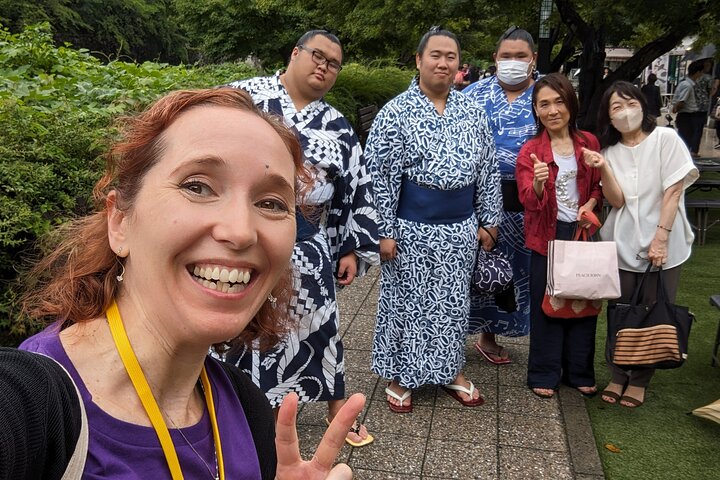
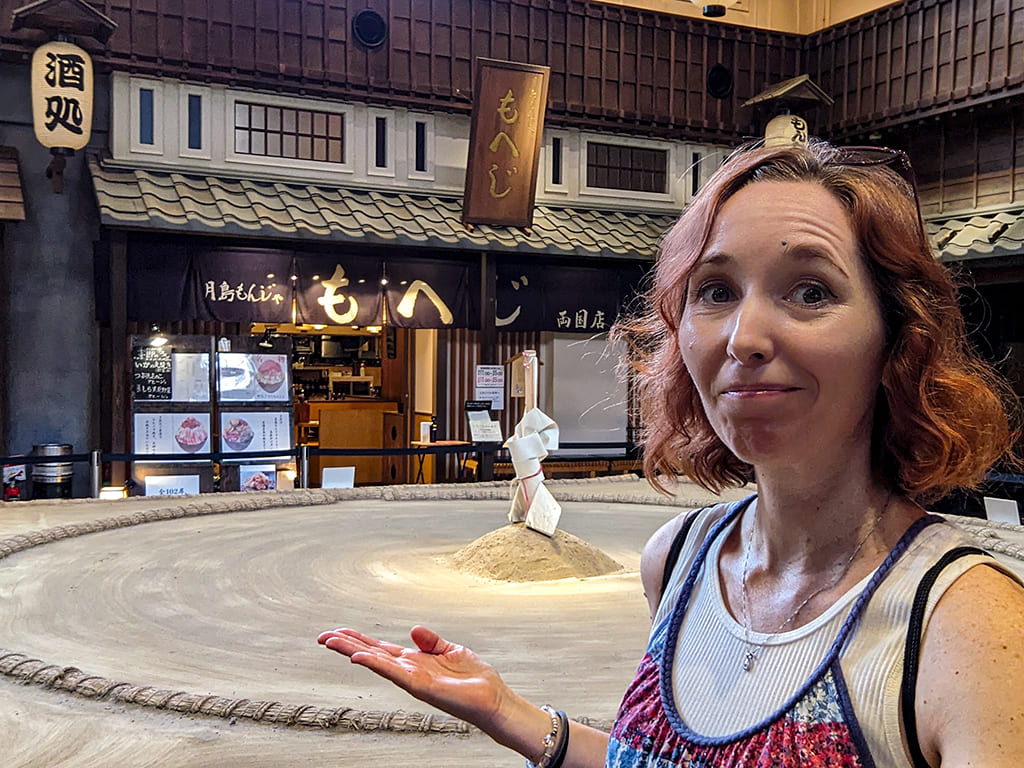
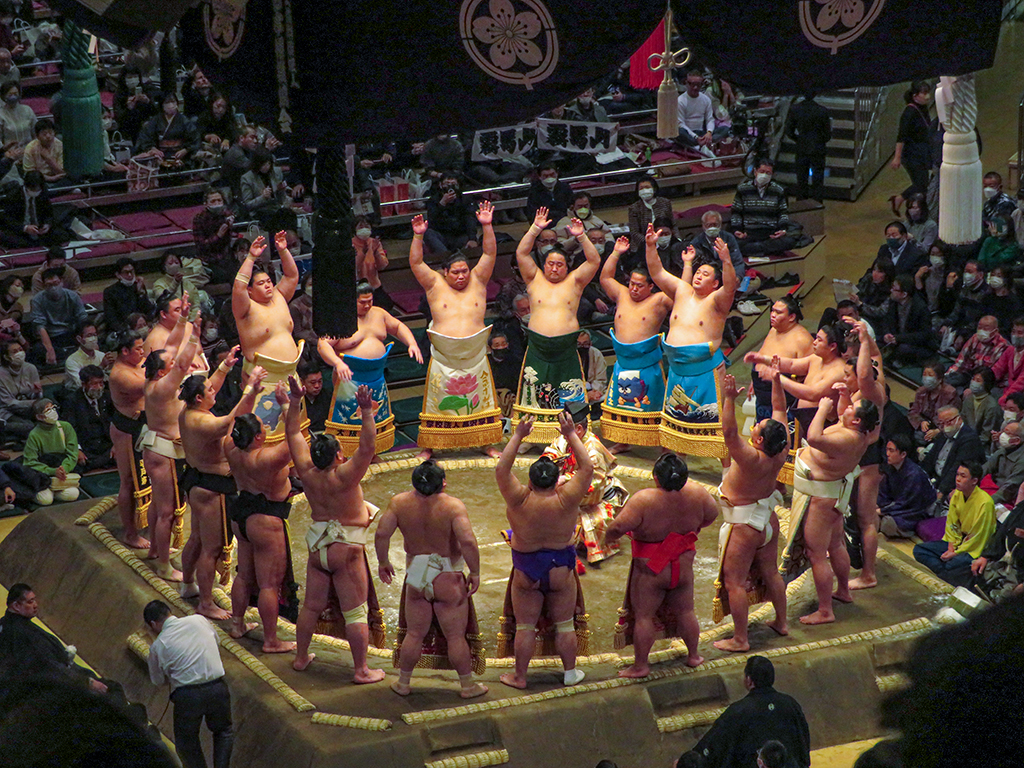
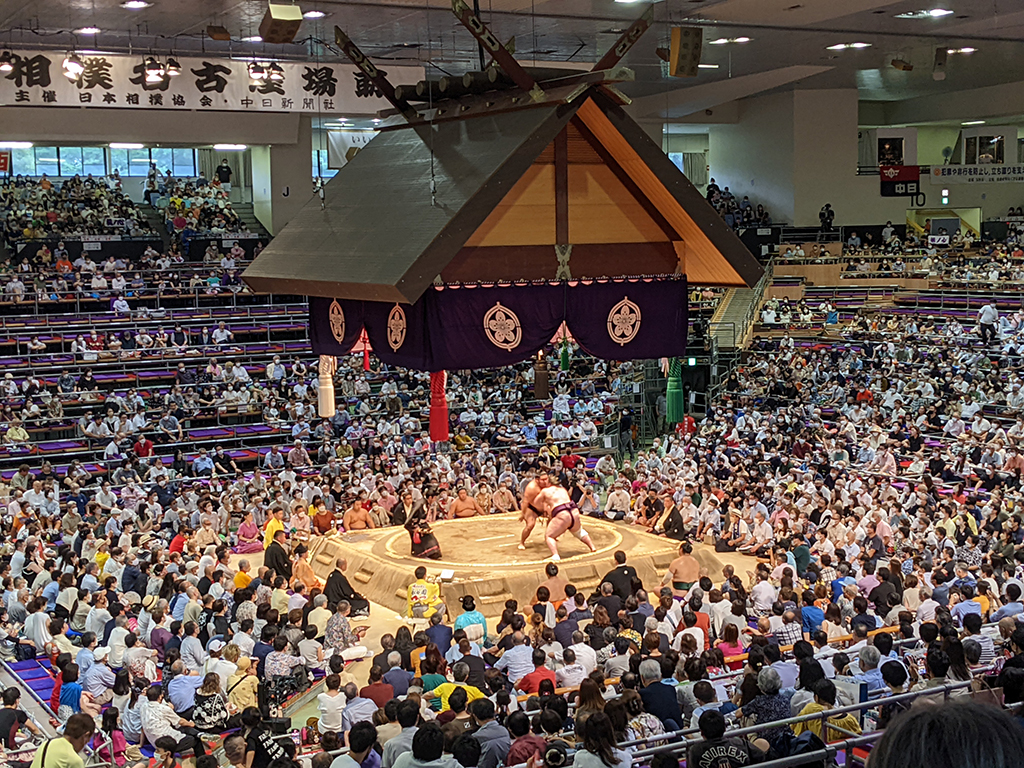
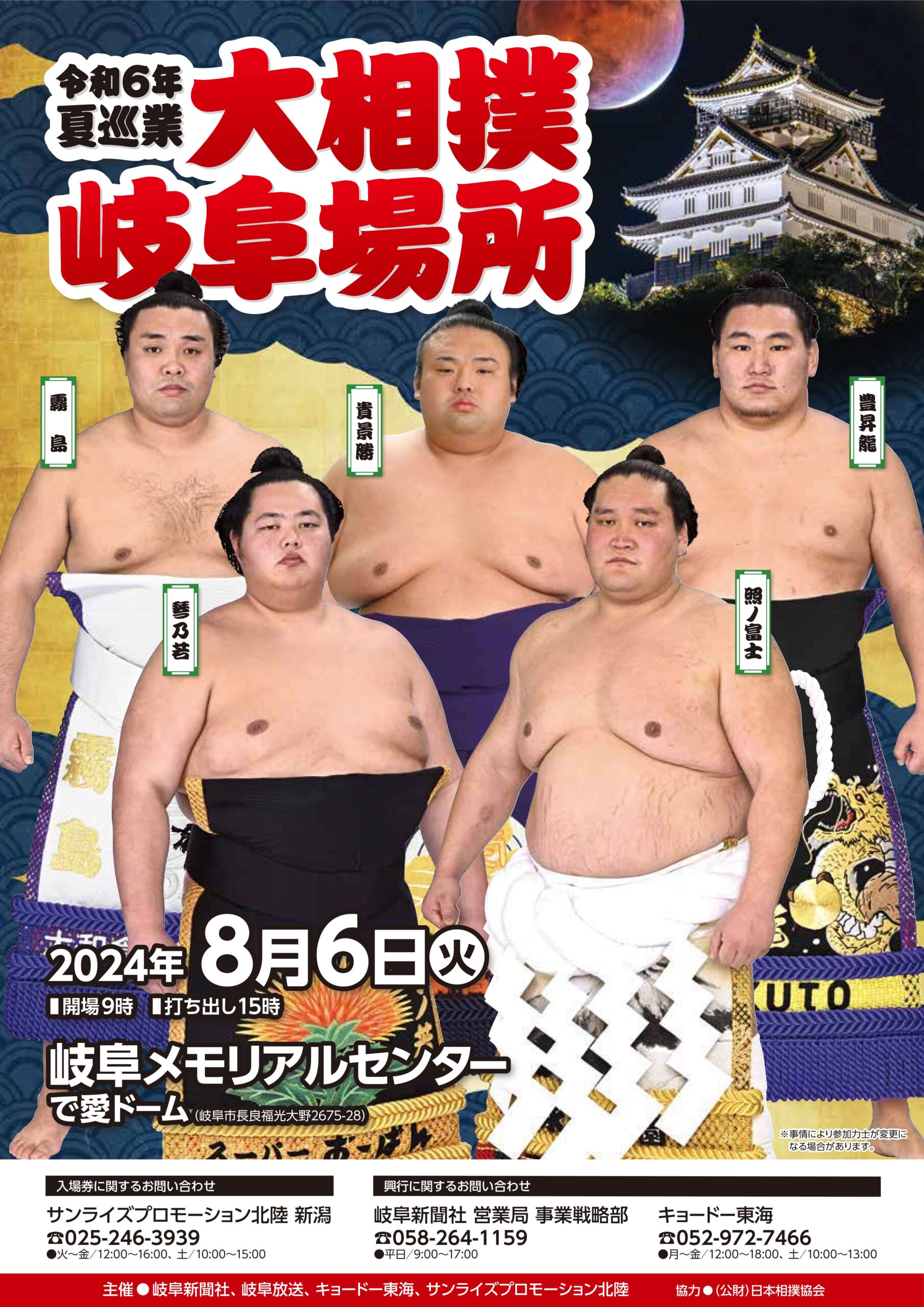

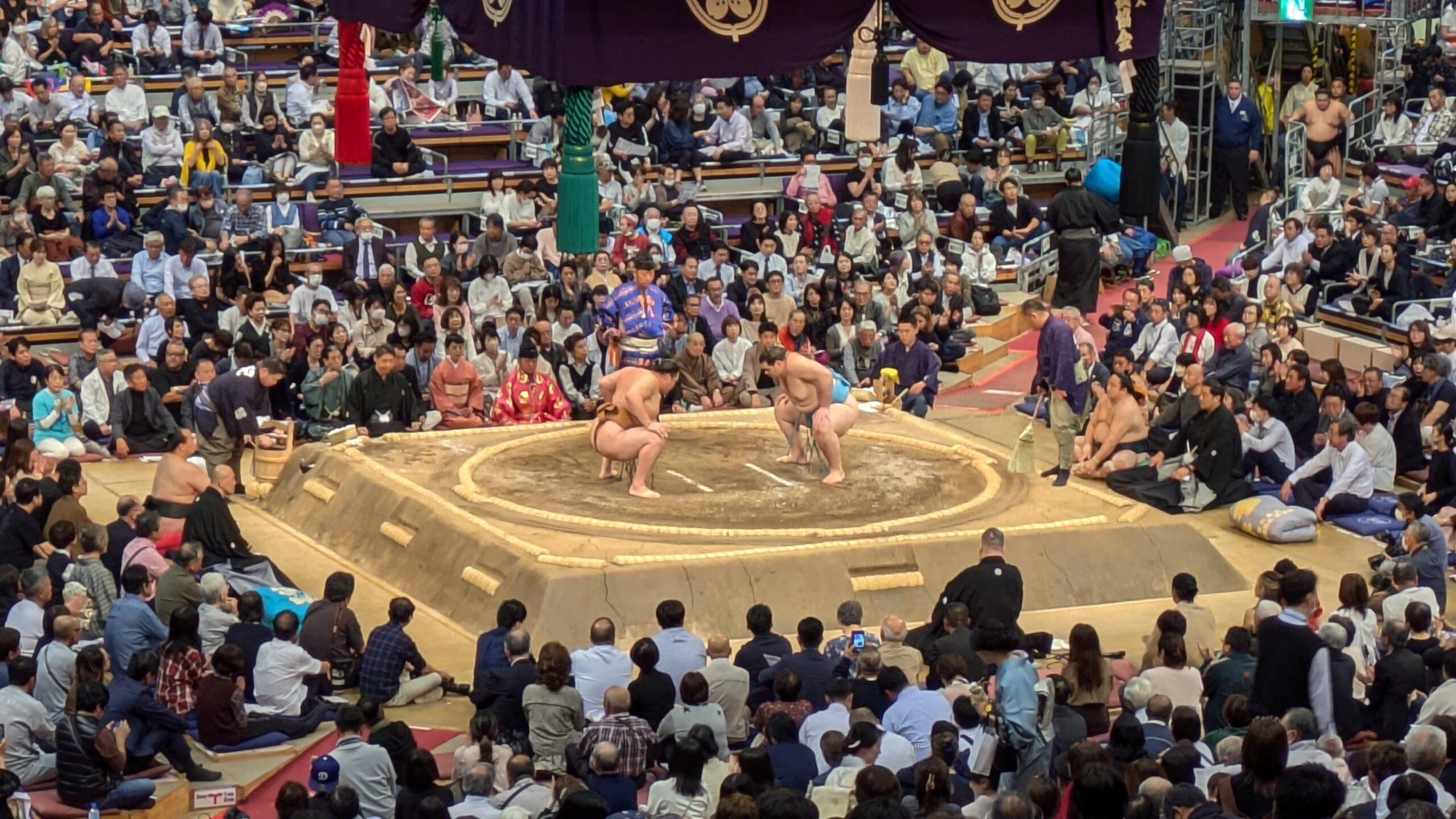

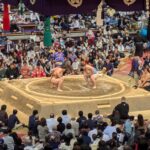
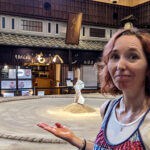
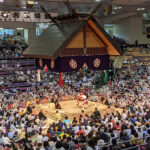
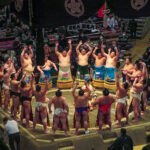
Elly , estaremos en Japon del 15 de nov al 1 de diciembre . Podemos ver sumo conigo en esas fecha !?
Holaaa, justo en esas fechas ee el Gran Torneo de Fukuoka, pero ya hace varias semanas atras que las entradas se agotaron. Asi que esta un poco dificil. En reventa todavia hay posibilidad de compra. Como de ganas teneis de venir conmigo? ^^